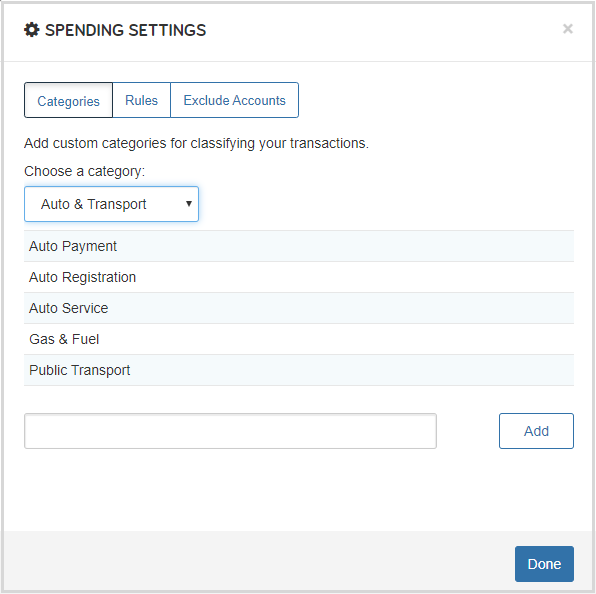Tuesday, January 1st, 2019
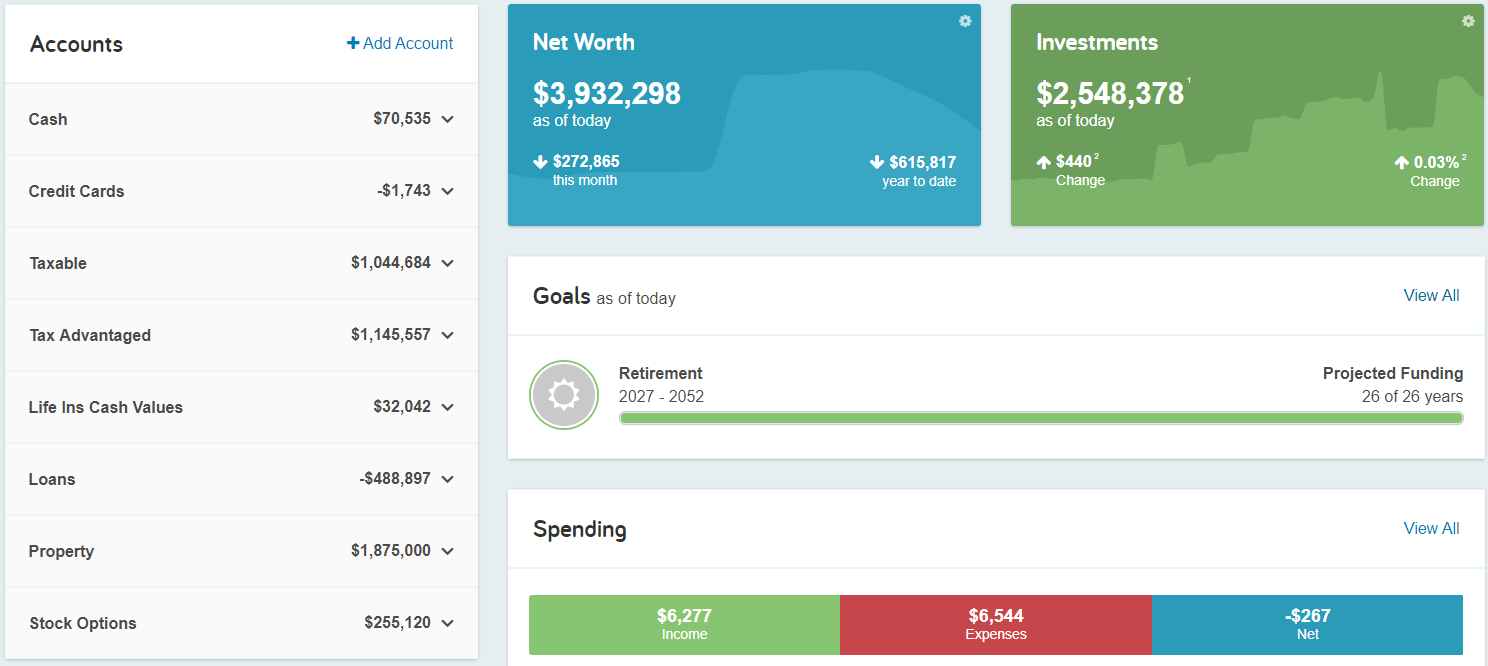
This post will walk you through utilizing the spending & budgeting tools available in your financial portal.
These tools allow you to build out monthly spending budgets while also tracking spending habits on your connected accounts.
To analyze spending and budgeting, you must first connect your accounts. Please refer to the Adding Accounts user guide for additional information.
Please Note: By default, your advisor will be unable to see your spending information. To change this setting, modify your privacy permissions located in settings.

1. From the Home page, click the Spending tab or tile.

2. The Spending page is comprised of 3 sections: Overview, Budgets, and Transactions.
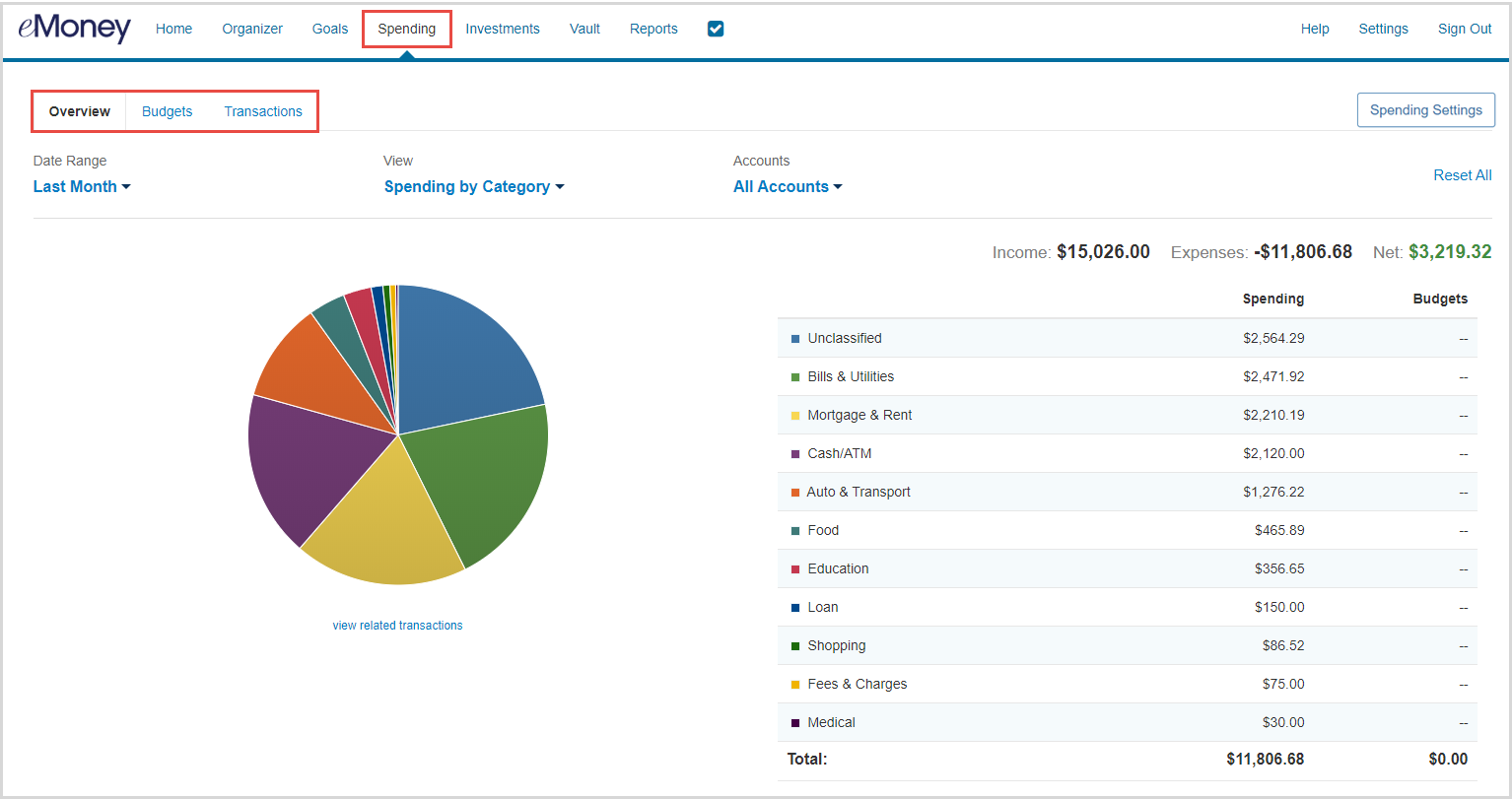
3. The Overview tab shows spending by category over a specific date range. The default view is to view spending amounts This Month, by Category, and from All Accounts. Hover over the pie chart to see how much you’ve spent in that category. You can also click “view related transactions” to see a list of transactions from the specified date range and accounts.
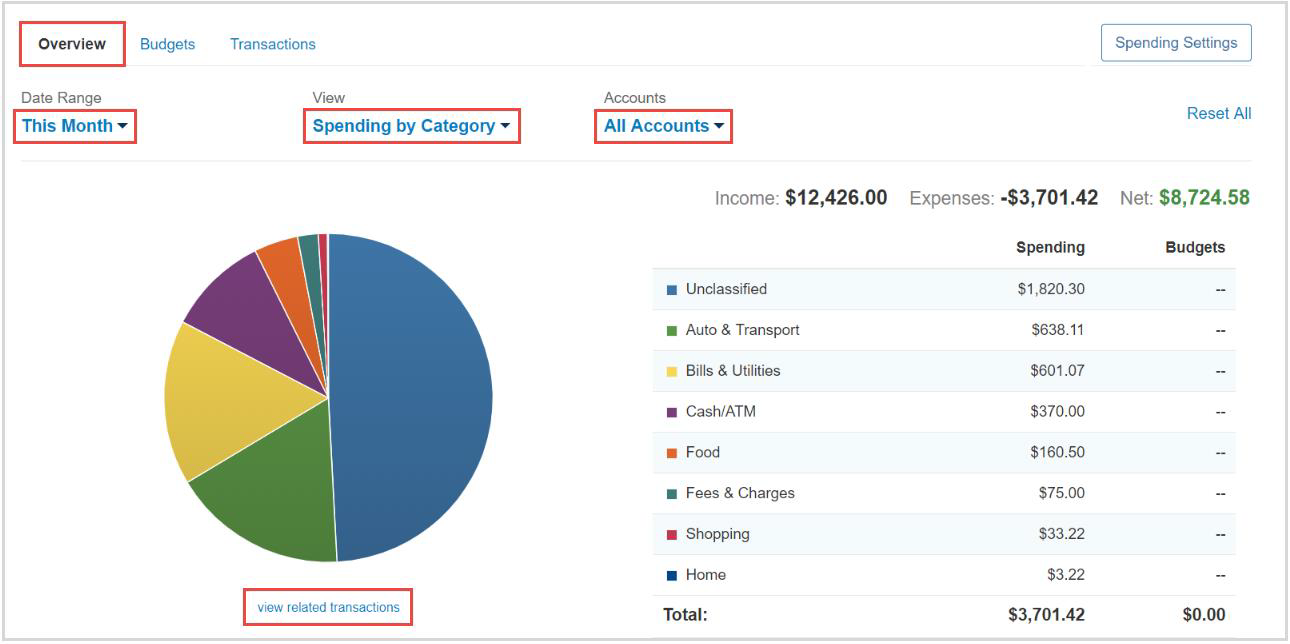
4. The Budgets tab allows you to create budgets to help manage your expenses. You can either add budget items one at a time by category, or you can select Create an Auto-Budget to view a budget created automatically based on your average spending from the past six months.
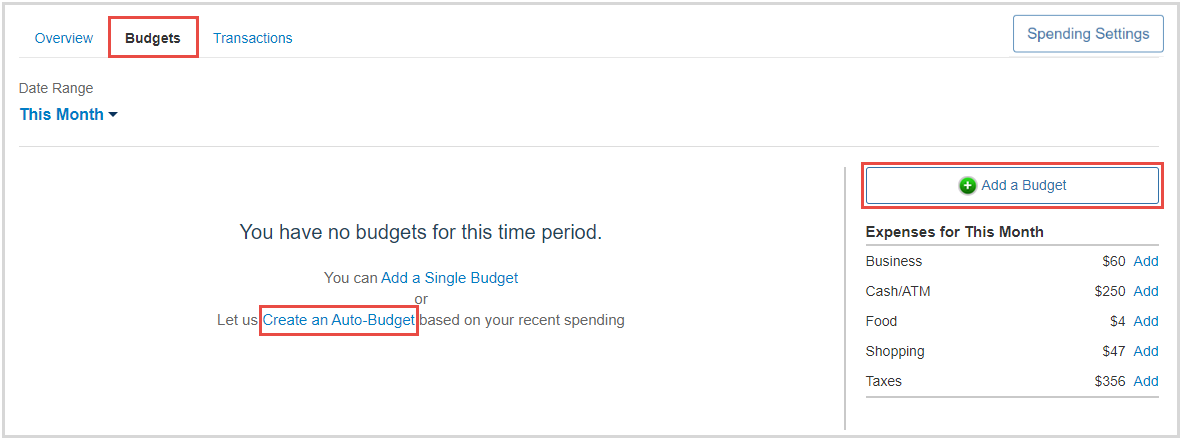 5. Once you’ve added your budget, go back to the Spending – Overview tab and select the Budget History view to see the amount you’ve budgeted, the amount you’ve spent, and whether you’re over or under budget.
5. Once you’ve added your budget, go back to the Spending – Overview tab and select the Budget History view to see the amount you’ve budgeted, the amount you’ve spent, and whether you’re over or under budget.
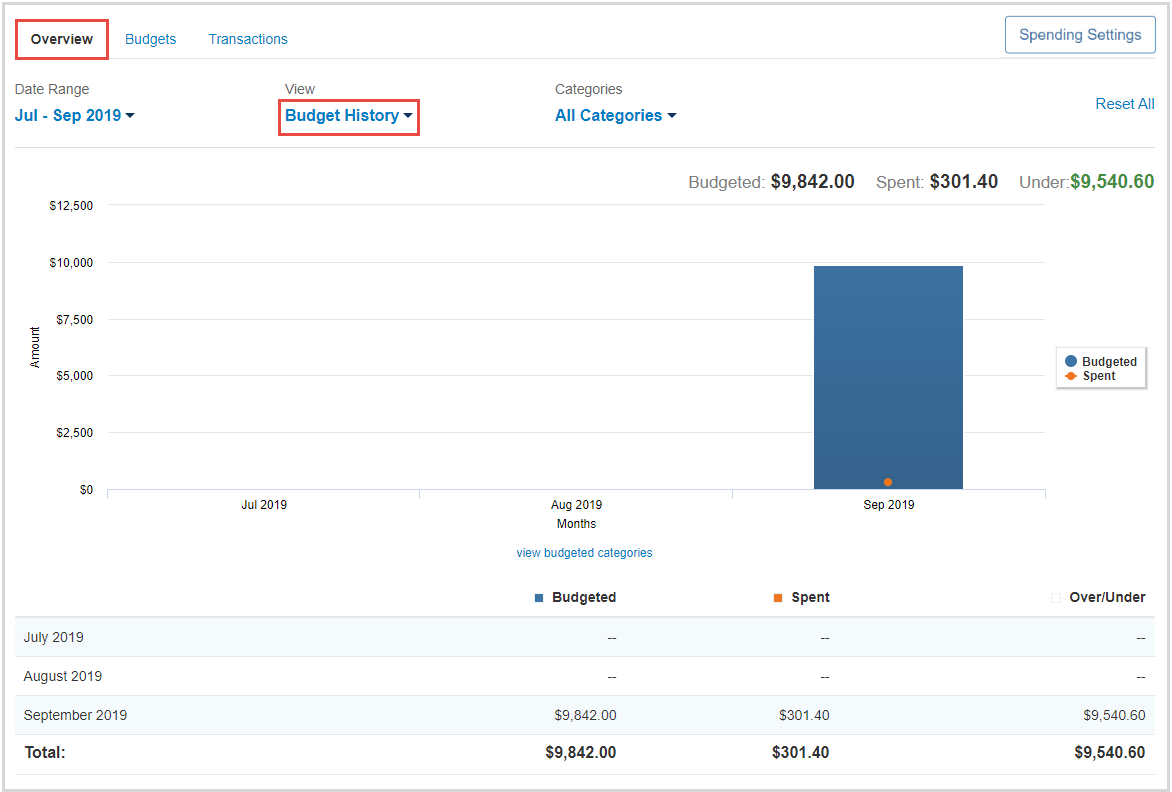 6. The Transactions tab displays all bank transactions from your online accounts.
6. The Transactions tab displays all bank transactions from your online accounts.
 To make changes to the Description or Category provided for the transaction, click the transaction’s row and type a new description and/or select a new category from the drop-down by clicking on the existing Category.
To make changes to the Description or Category provided for the transaction, click the transaction’s row and type a new description and/or select a new category from the drop-down by clicking on the existing Category.
 If you want to apply your edits to all similar transactions, you can create a Rule. First, make the edits to the Description and Category of a transaction, then click the transaction’s row and check the box under Rule. Click Save Rule.
If you want to apply your edits to all similar transactions, you can create a Rule. First, make the edits to the Description and Category of a transaction, then click the transaction’s row and check the box under Rule. Click Save Rule.
 7. If you can’t find the category you’re looking for, you can create new subcategories by clicking Spending Settings at the top of the budgeting page. Choose the parent category, type in the new sub category and click Add.
7. If you can’t find the category you’re looking for, you can create new subcategories by clicking Spending Settings at the top of the budgeting page. Choose the parent category, type in the new sub category and click Add.

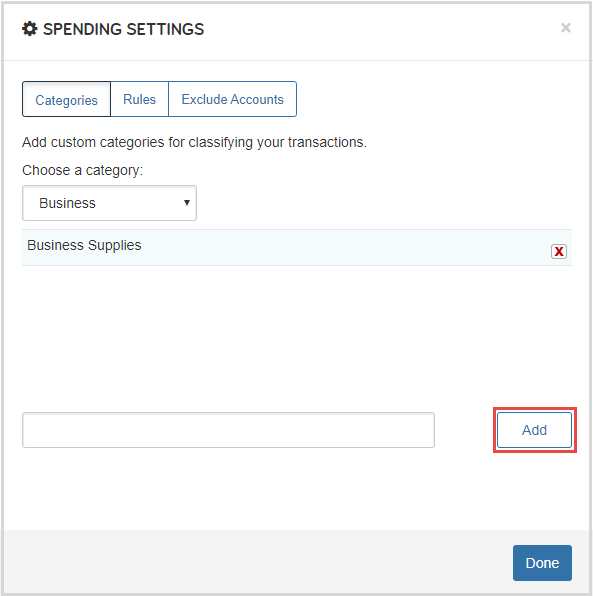
8. To Export transactions, click the Export Results button to export the transaction table to a .CSV format.

9. The Spending Settings button allows you to further manage spending Categories, Rules, and Excluded Accounts.

